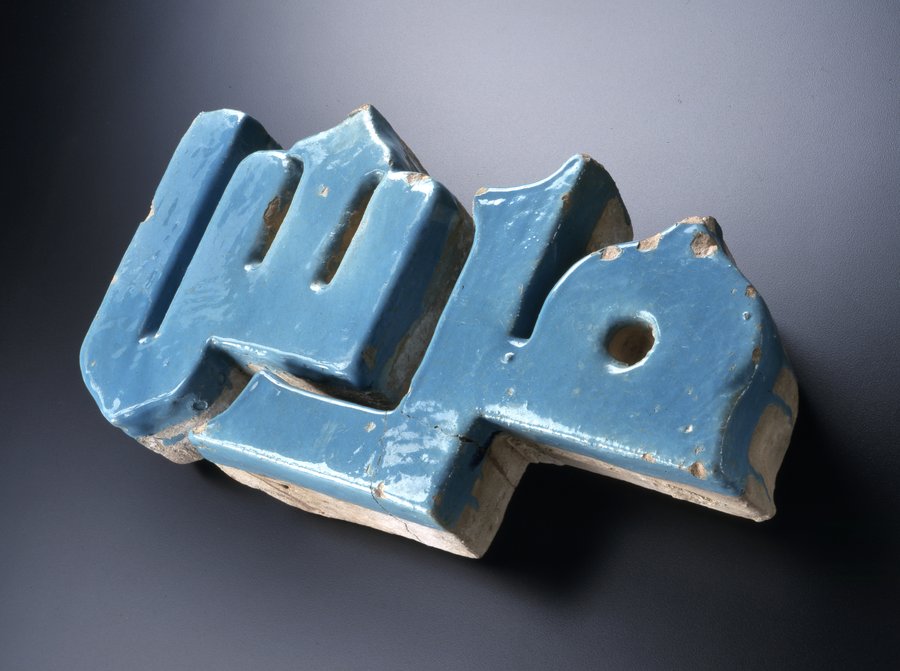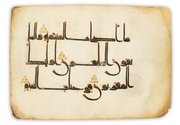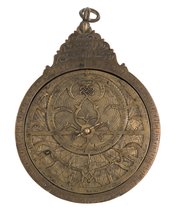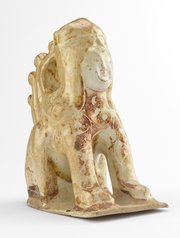
Two turquoise-glazed tiles
Museum of Islamic Art
- Title:
- Two turquoise-glazed tiles
- Production place:
- Iran
- Date:
- 1100 - 1199
- Period:
- Seljuq
- Title:
- Two turquoise-glazed tiles
- Production place:
- Iran
- Date:
- 1100 - 1199
- Period:
- Seljuq
- Material:
- Ceramic, Glaze
- Technique:
- Moulding, Glazing
- Dimensions:
- 17.5 × 42.6 × 7.5
Religious and secular architecture of Seljuq Iran and Central Asia is notable for the beautiful interplay between the subtle brickwork and the vibrant decoration in polychrome glazed tilework, which set the pace for the later developments in architectural decoration of the region. This set of two turquoise-glazed, mouldedware tiles would originally have been part of a large inscription decorating either the interior or the external walls of a public building of the Seljuq period located in Iran or Central Asia. Despite fitting well when paired together, the four Arabic letters (mim and ra, sin and alif) form no word of coherent meaning. Their large scale however indicates their function as architectural decoration, meant to be visible and legible from a certain distance. Similar inscriptions in glazed tilework can still be found in situ on madrasas, mosques, shrines glorifying God or praising the current rulers. Tilework inscriptions with poetic and literary quotations would have been used to decorate more private or less visible areas of palaces and royal tombs. Tilework decoration usually displays a bright colour scheme of turquoise, cobalt blue, aubergine hues, and white. The use of Arabic was strategically adopted by Seljuq patrons in Iran to clearly signal their adhesion to Islam and thus their right to rule among peers and over the majority of Muslim population of the region.



